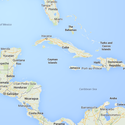-
About
- About Listly
- Community & Support
- Howto
- Chrome Extension
- Bookmarklet
- WordPress Plugin
- Listly Premium
- Privacy
- Terms
- DMCA Copyright
- © 2010-2025 Boomy Labs

 List Builder
List Builder
Listly by List Builder
Top Things to Do in Gdansk, Poland, from a Cruise Ship - Feel free to add, vote or provide feedback to the list
Gdańsk Oliwa Archcathedral is a church located in Gdańsk, Oliwa district; dedicated to The Holy Trinity, Blessed Virgin Mary and St Bernard. The archcathedral in Oliwa is a three-nave basilica with a transept and a multisided closed presbytery, finished with an ambulatory. The façade is flanked by two slender towers, 46-metres tall each with sharply-edged helmets.
Oliwa, also Oliva is one of the quarters of Gdańsk, Poland. From east it borders Przymorze and Żabianka, from the north Sopot and from the south with the districts of Strzyża, VII Dwór and Brętowo, while from the west with Matarnia and Osowa.
St. Mary's Church ( Polish: Bazylika Mariacka, German: St. Marienkirche), or formally the Basilica of the Assumption of the Blessed Virgin Mary ( Polish: Bazylika Mariacka Wniebowzięcia Najświętszej Maryi Panny w Gdańsku), is a Roman Catholic church in Gdańsk, Poland, and is currently the largest brick church in the world.
The Battle of Westerplatte was the first battle in the Invasion of Poland, the beginning of the Second World War in Europe. Beginning on September 1, 1939, German naval forces and soldiers assaulted the Polish Military Transit Depot ( Wojskowa Składnica Tranzytowa, WST) on the peninsula of Westerplatte, in the harbour of the Free City of Danzig.
The Monument to the fallen Shipyard Workers 1970 ( Polish: Pomnik Poległych Stoczniowców 1970) was unveiled on 16 December 1980 near the entrance to what was then the Lenin Shipyard in Gdańsk, Poland. It commemorates the 42 or more people killed during the Coastal cities events in December 1970.
Gdańsk Zaspa is an SKM stop in Gdańsk, Poland. It is the fifth stop of this urban train line. This stop is not connected with any railway station.
The Artus Court, formerly also Junkerhof, ( Polish: Dwór Artusa, German: Artushof) is a building in the centre of Gdańsk, Poland ( German: Danzig), at Długi Targ 44, which used to be the meeting place of merchants and a centre of social life.
St. Nicholas Church / Kościół św. Mikołaja Gothic Dominican church dating from 14th century, one of the few in Gdansk not destroyed in WWII.
The Polish Post Office (Poczta Polska ) in the Free City of Danzig (Gdańsk) was created in 1920 and operated until the German invasion of Poland that marked the beginning of the World War II. The post was established in Danzig (Gdańsk) under the provisions of the Treaty of Versailles, and its buildings were considered extraterritorial Polish property.
Krynica Morska [krɨˈɲit͡sa ˈmɔrska] is a town and coextensive municipality () on the Vistula Spit in northern Poland with 1,364 inhabitants (2006). It has been a part of Nowy Dwór Gdański County in Pomeranian Voivodeship since 1999; previously it was in Elbląg Voivodeship (1975-1998).
Placówka powstała w 2011 roku. Na początku działała przy ul. Ogarnej 117/118, natomiast od 2013 roku mieści się w lokalu przy ul. Piwnej 19/21. Na zbiory muzeum składają się historyczne zabawki, pochodzące z lat 1920-1989, pochodzące z terenów Polski. W skład ekspozycji wchodzą m.in.
may not meet Wikipedia's notability guideline for biographies . reliable, secondary sources about the topic. If notability cannot be established, the article is likely to be merged, redirected, or deleted. (January 2014)
The National Museum in Gdańsk ( Polish: Muzeum Narodowe w Gdańsku), established in 1972 (although the history goes back the third quarter of 19th century), is one of the main branches of Poland's National Museum system. Its main location is in the old Franciscan monastery, which has been used to house exhibits since the end of the 19th century.
The Gdańsk University of Technology ( pol. Politechnika Gdańska) is a technical university in Gdańsk- Wrzeszcz, and one of the oldest universities in Poland. It has nine faculties and more than 24 thousand undergraduate, as well as about 400 doctoral students. In 2004 it employed 2500 people, including 1200 academics.
With the Golden Gate and the Highland Gate, the Green Gate spans the Long Market and Long Street, together comprising the Royal Route. The Green Gate was clearly inspired by the Antwerp City Hall. It was built 1568-71 as the formal residence of Poland's monarchs.
'Centrum Hewelianum - gdańskie centrum nauki' Usytuowane w samym sercu Gdańska Centrum Hewelianum to nowoczesne centrum nauki mieszczące się w zabytkowych obiektach architektury militarnej. Centrum Hewelianum zajmuje się popularyzacją nauki organizując interaktywne i multimedialne wystawy w nowoczesny sposób pokazujące inne oblicza nauki! Już dziś pomagają one zrozumieć fizykę, astronomię, historię czy biologię a wkrótce także matematykę i chemię.
Główne Miasto ( niem. Rechtsstadt) - reprezentacyjna część gdańskiej dzielnicy Śródmieście, tworząca zwarty zespół zabytkowy. Znajduje się tu większość zabytków miasta; Bazylika Mariacka Wniebowzięcia NMP, Złota Brama czy Ratusz Głównego Miasta oraz zabytkowa oś Drogi Królewskiej składająca się z ul. Długiej i Długiego Targu.
Ratusz Głównego Miasta w Gdańsku - zabytkowy ratusz na Głównym Mieście w Gdańsku. Jest to gotycko- renesansowa budowla, usytuowana na styku ulicy Długiej i Długiego Targu, która dominuje nad panoramą Drogi Królewskiej, najbardziej reprezentacyjnego traktu tej części miasta. W ratuszu Głównego Miasta mieści się Muzeum Historyczne Miasta Gdańska.
In the 18th century, residential construction aimed at the wealthy city folk took precedence. The erected residences were mostly classical style with beautiful gardens and the obligatory tree-lined driveways. By 1804, Langfuhr had about 900 residents, most of them working in breweries, distilleries, retailers, and factories making a kind of ash used to bleach cloth.
